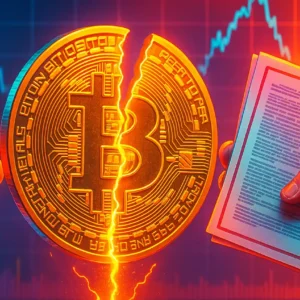In a landmark move that could transform institutional finance, Ripple has announced a $1 billion partnership designed to tokenize U.S. Treasuries and unlock access to the estimated $120 trillion global Treasury market. By leveraging its blockchain infrastructure, Ripple aims to streamline settlement speeds, reduce counterparty risk, and usher in a new era of digital asset utility for institutional investors.
Ripple’s Strategic Move
Ripple’s latest agreement brings together leading asset managers and custodians to pilot a tokenized Treasury issuance platform. Through this collaboration, real-world Treasury bonds become cryptographic tokens on Ripple’s network, enabling near-instantaneous transfers and 24/7 liquidity. Traditional settlement cycles, which often span days, could be compressed to minutes, dramatically improving capital efficiency for banks, hedge funds, and pension funds.
Institutional Adoption Accelerates
Institutional players have long sought a compliant way to trade digital assets without sacrificing regulatory safeguards. This deal provides exactly that. By embedding legal and audit frameworks into the token design, Ripple ensures that tokenized Treasuries meet existing KYC/AML requirements. Early participants report significant cost savings from reduced reconciliation efforts and fewer intermediaries, making this approach attractive for large-scale treasury management.
Technological Edge
At the heart of this initiative is Ripple’s consensus protocol, which offers high throughput and deterministic finality. Unlike public blockchains that can suffer from congestion, Ripple’s network can process thousands of transactions per second with minimal fees. The combination of on-chain smart contracts and off-chain oracle integrations automates coupon distributions and maturity settlements, ensuring transparency and auditability.
Market Implications
With the U.S. Treasury market often cited as the backbone of global finance, introducing tokenized instruments could send shockwaves through money markets and repo desks. Enhanced liquidity and real-time settlement may reduce systemic risk during periods of stress by enabling rapid portfolio rebalancing. Moreover, this innovation opens the door for fractional ownership, allowing smaller institutions and family offices to gain exposure to high-quality sovereign debt.
Looking ahead, regulators will play a pivotal role in shaping the trajectory of tokenized Treasuries. Clear guidelines on custody, asset segregation, and reporting standards will be critical to maintain market confidence. Ripple’s collaborative approach with compliance teams signals a willingness to work hand-in-hand with authorities to establish best practices.
Conclusion
Ripple’s $1 billion treasury tokenization deal represents a major milestone in bridging traditional finance and digital assets. By addressing settlement inefficiencies and regulatory considerations, the company could pave the way for broader institutional adoption of blockchain-based securities. As the pilot progresses, all eyes will be on trading volumes, performance metrics, and the regulatory landscape to measure the true impact of this groundbreaking initiative.
34-year-old writer and content strategist with a passion for technology, culture, and storytelling. Over the past four years, he’s taken a strong interest in the crypto sphere, diving deep into blockchain trends, meme coin madness, and the evolving DeFi space.
0 comments
Related post
Table of content










